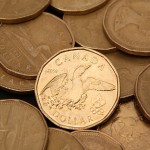Gold futures logged moderate gains this week, and remain at the highest levels since the Crimean crisis. The dollar and US stocks saw some back-and-forth dynamics throughout this week, but closed lower, supporting gold.
Gold futures for delivery in August closed for $1 337.4 per troy ounce on Friday on the COMEX in New York, recording a daily drop of 0.13% and a weekly increase of about 1.2%. Weekly high and low stood at, respectively, $1 346.8 per ounce on Thursday, a three-month high, and $1 312.1 per troy ounce on Monday. Last week the contract was little changed, at a 0.2% gain.
Meanwhile, silver contracts for September closed at $21.461 per troy ounce, dropping 0.22% for the session, and logging a weekly gain of about 1.5%. Weekly high and low were at, respectively, $21.630 on Thursday, which was also a four-month peak, and $20.865 on Monday. Last week silver also added about 0.2%.
“Equities are getting hammered, and we are seeing a flight to safety,” Frank Lesh, trader at FuturePath Trading LLC in Chicago, said for Bloomberg. “Concerns about Europe are coming back to the forefront.”
Fed minutes
“Gold has been given a lift by the Fed minutes as the dollar comes under pressure,” Huang Wei, Shanghai-based analyst at Huatai Great Wall Futures Co., said for Reuters.
The log from the June 16 – June 18 meeting of the Federal Open Market Committee (FOMC) was released by the Fed yesterday. It revealed that an interest rate hike was still not on the table, confirming the Fed’s limited confidence in the US economic recovery, pressuring the dollar. Meanwhile, the account from the meeting also pointed the expected expiry of the Federal Reserve’s assets-purchasing stimulus program at October this year.
The meeting, which took place some three weeks ago, resulted in decisions to keep the benchmark lending rate unchanged at 0.25%, while reducing assets purchases through its monetary stimulus program by another $10 billion to $35 billion a month, expressing limited confidence in the US economic recovery.
Stocks, dollar
US stocks went back and forward throughout the week, though finally all three major indices closed in the negative. S&P 500 lost about 1% as Wall Street trading closed this week, Dow 30 declined by more than 0.5%, while Nasdaq 100 was also down 0.5%.
“Money seems to be shifting out of equities and into gold,” said one precious metals trader in Hong Kong, cited by Bloomberg.
Meanwhile, assets at the SPDR Gold Trust – the largest gold-backed exchange-traded fund, was almost unchanged on Friday at 800.05 tons, after adding some 2 tons earlier this week. The fund has gained more than 16 tons over the last three weeks. Assets were recently pressured to multi-year lows by a recovering US economy.
The US Dollar Index, which measures the greenback’s performance against six other major currencies, lost about 0.15% this week, pressured by the Feds minutes, closing for 80.24.
Next week
Unlike this week, the next seven days will offer quite a bit of economic data. US retail sales for June are expected to log a 0.6% monthly gain, after the 0.3% growth in May, while core retail sales are projected to have added 0.5% on a monthly basis. Industrial production and PPI for June will be posted on Wednesday, with expectations of slight gains in both. Thursday will see key housing data, with building permits and housing starts for June projected to stand for minor increases.
Eurozone
The Eurozone will also offer important data next week. Industrial production for May will be posted on Monday, and analysts suggest a work-day-adjusted annual growth of 1.4%, while the seasonally-adjusted monthly growth is projected at a 0.8% monthly increase. The German ZEW survey of economic sentiment for July will be posted on Tuesday, before a key report on CPI on Thursday. Experts predict consumer prices have added 0.5% on an annual basis and 0.1% month-on-month in June.





